#toluidine
Text
also i have no merch of prompto ffxv but i still love him so much. its been like. Its going to be Holy fuck.. 8 years in like september. whaat the fuck theres no way. number one fictional guy of all time to me. Number two actually. shadow the hedgehog is cooler. i had a crush on him when i was 9 i think.
Whatever im going to bed i have work in the morning ^_^ setting up samples of blue and also um. making standards for the data collection. whee! goodnight lol 💜
#astr.txt#Google is toluidine blue a pH indicator#also i dont talk much about selfship because im shy about it ^^; sourry
4 notes
·
View notes
Text
CAS NO.99-97-8 N.N-Dimethyl-P-Toluidine/ 4,N,N-Trimethylaniline supplier in China/sample is free/DA 90 DAYS
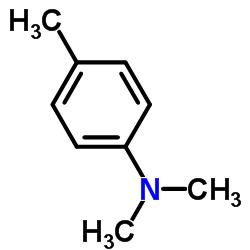
Read the full article
#4NN-Trimethylaniline#99-97-8#aminecatalysts#Amines#aminoacidsandtheirderivatives#anilinederivatives#aromatichydrocarbons#BuildingBlocks;C9#C9H13N#chemicalrawmaterials#ChemicalSynthesis#HighqualityN#industrialrawmaterials#intermediates#NN-Dimethyl-p-toluidine#N-Dimethyl-4-methylaniline)#N-DIMETHYL-P-TOLUIDINE#NitrogenCChemicalbookompounds#OrganicBuildingBlocks#organicchemicalrawmaterials#rawmaterials#reagentsandsupplements
0 notes
Text
N,N-Diethanol-P-Toluidine Market - Forecast (2023 - 2028)
N,N-diethanol-p-toluidine market size is forecasted to grow at a CAGR of 4.5% during the forecast period 2022-2027. N,N-diethanol-p-toluidine is a free radical curing and polymerization catalyst used in various end-use industries such as paints and coatings, adhesives, and more. The acrylate, epoxy resins, vinyl ether, and more are the resins manufactured from N,N-diethanol-p-toluidine. These resins are widely utilized in the manufacturing of paints and coatings. The N,N-diethanol-p-toluidine market is primarily driven by the growth of the paints and coatings industry. Moreover, the growth of the adhesives industry is anticipated to fuel the demand for N,N-diethanol-p-toluidine, this, in turn, will drive the N,N-diethanol-p-toluidine industry growth during the forecast period. However, the health hazards associated with the use of N,N-diethanol-p-toluidine will restrict the market growth during the forecast period.
Request Sample : https://tinyurl.com/3byy3j32
0 notes
Note
Hello, Mr. Holmes! How are you?
So, long story short, I ended up with an optical microscope in my room more or less 4 months ago, with 200 previously made slides (secured in a proper box), and lots of new ones too, for me to prepare myself. I love microbiology (it's one of my hyperfixations, curse my neurodivergency) and now I love it even more (my mother has had to drag me away from the microscope - I named it Wesley - in the middle of the night multiple times now).
After much conversation, I finally convinced my mom to buy me the proper equipment to prepare the slides!
So, I'm sending this ask to you, as I know you also have a microscope and that you use it a lot: what kind of equipment do you recommend me buying (gloves, scalpel blades, tints, etc), while still remembering that all of the stuff needs to stay in my room (properly taken cared of by me, of course)?
For example, I'm unsure if different dyes are used for different smears and specimens due to it's affinity (I've noticed that on 'organic matter' slides, images are usually tinted purple or pink, while on plant-based slides, images are usually tinted green and blue, with a few red structures.) Considering that I don't have access to a mortuary, I will mostly make plant slides. There must be a difference in the dyes then, right?
Sorry for the long text! Hope this isn't too much of a bother.
- a 17-year-old :)
Congratulations on your new light microscope. I do hope you get the best out of it. I am overjoyed that someone else appreciates the art of microscopy and microbiology.
However, you need to be careful to not strain your eyes. It is recommended to take breaks every 15 minutes to close your eyes or focus on something in the distance to reaccommodate your eyes. And get up every 40 minutes, stretch and correct your posture. And it is recommended to not use a microscope more than 5 hours per day. John has to chase me away from my microscope sometimes to take a break when I sit there for hours, my posture like a Caridea.
Concerning equipment, you will obviously need a scalpel or other sharp blade to make very thin slices of your specimen, as thin as possible. And forceps to move your samples (best just get a whole dissection kit it has everything). Obviously slides and coverslips, pipettes for the stains or water, maybe some tubes. A pen to label your slides. In many staining procedures ethanol or acetone is also used. A waste jar to safely dispose of any chemicals, but be careful what you mix. A rack for staining and containers. I would recommend nitrile gloves, some people are sensitive to latex.
The dyes you use depend on the specimen. For example in histological slides of tissues hematoxylin and eosin are most commonly used (short HE-stain). That's what you most likely saw on your slides, it's blue, purple and pink.
Hematoxylin is a basic compound extracted and oxidised from the logwood tree (Haematoxylum campechianum), and it stains acidic compounds in the cells (or basophilic because they have an affinity for basic substances). For example nucleic acids like DNA or RNA get stained by hematoxylin because they are basophillic. And where are lots of nucleic acids? In the nucleus and ribosomes, that is why they appear blue to purple in the staining because they bind hematoxylin.
Eosin is an acidic compound, and stains basic or acidophilic compounds red or pinkish, like proteins, collagen, cytoplasm, extracellular matrix.

(Ductus epididymidis with HE-stain)
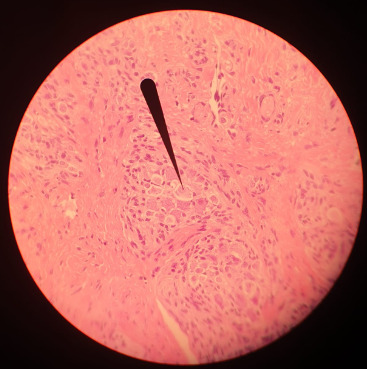
(Tongue HE-stain, pointer marking a ganglion; that is my picture)
Of course there are more specific stains for specific tissues like Golgi's silver staining for neurons.
For plants toluidine blue is often used, high affinity for acidic tissues, and can stain blue to green to purple.
It is often combined with safranin, a basic azine, which is probably the red stain you saw. It stains polysaccharides and lignin, woody parts of the plant. Safranin and astrablue is also often combined, astrablue stains non-lignified parts of the plant.

(Ulex europaeus stem; not my pictures I don't have any samples currently, source Atlas of plant and animal histology)
Safranin is also used in bacteriology, in the famous Gram staining. In Gram staining you use crystal violet (blue/purple), Lugol's iodine solution, then wash it with ethanol and add safranin (red) as a counter stain. Bacteria is gram-positive if the crystal violet stays in their thick murein cell wall, can't be washed out with the ethanol and the bacteria stays blue. Gram-negative appear red because of the counterstain.
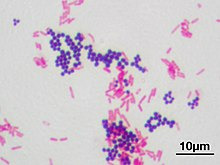
(Staphyloccocus aureus (violet, gram positive) & Escherichia coli (red, gram negative); not my picture, source Wikipedia)
However, I am not sure whether you have access to any of those substances, if they are too expensive for you or if they are too hazardous if used in your own room for a prolongued time. Of course those substances need to be stored properly, and your own room is probably not a good place, especially for ethanol or acetone. The fumes. I would recommend to ask your biology or chemistry teacher whether they can recommend anything further and where to buy said solutions in your area, and if they can't they are idiots. There are also many useful resources and tutorials on Youtube.
Another fascinating experiment for your microscope, that you can perform without buying any chemicals, is a hay infusion. You put hay into a container filled with water, and let it sit undisturbed for a week in a sunny area but not in direct harsh sunlight. During that time the microorganisms in the hay are reproducing in the solution, feeding on the polysaccharides of the hay. Protozoans also flourish in the hay infusion and eat the bacteria. It might get cloudy and a bit foul smelling (best not do it in your own room if you don't want to sleep next to a rotting smell).
When you put a drop of the solution onto a slide and look at it in the microscope, you should see a variety of microorganisms like bacteria (like Bacillus subtilis), amoeba, ciliates, heliozoa, algae et cetera. At different depths of the liquid you should find different kinds of organisms, because of differing oxygen content.
However, pathogens can also occur in the hay infusion so handle it carefully and work sterile, wash your hands properly.
And even if you don't work at a morgue you can still get tissue samples to experiment on, after all meat is sold in supermarkets, basically the same as a human body. And at the butchers they even sell organs like chicken hearts, pig kidney, liver, blood et cetera. Or observe your own hair under the microscope.
Which kind of samples and slides were included in your starter kit? Be careful to not leave them lying around in the sunlight, or the stain might fade. Always store them in the proper box.
#roleplay#rp#sherlock roleplay#sherlock rp#johnlock roleplay#johnlock rp#sherlock#bbc sherlock#sherlock holmes#sherlock holmes rp#sherlock holmes roleplay#science#scientist#research scientist#histology#microscope#microscopy#bacteria#bacteriology#pathology#anatomy#biology#chemistry#scientists#pictures#he stain#specimen#samples#slides#sherlock replies
46 notes
·
View notes
Text
A novel biosorbent-based marine macroalgal biomass for efficient removal of toluidine blue and basic yellow 28 dyes-contaminated waters
Sguillar, M., Lakhmiri, R., Eladnani, I., Ait Oukharaz, N., El Fargani, H., Laabd, M., Albourine, A., Safi, M., & Cherkaoui, O. (2024). “A novel biosorbent-based marine macroalgal biomass for efficient removal of toluidine blue and basic yellow 28 dyes-contaminated waters.” Chemical Physics Letters, 843, 141234. https://doi.org/10.1016/j.cplett.2024.141234
Abstract
Nowadays, the release of…
View On WordPress
0 notes
Text
Early Detection Matters: Oral Cancer Screening
Introduction: Understanding Oral Cancer
Oral cancer is a serious and potentially life-threatening condition that affects the tissues of the mouth and throat. It can develop in various areas, including the lips, tongue, cheeks, gums, floor of the mouth, and throat. While oral cancer is relatively rare compared to other forms of cancer, early detection is crucial for successful treatment and improved outcomes. In this guide, we'll explore the importance of oral cancer screening, the risk factors associated with oral cancer, and the screening methods used to detect this disease in its early stages.

The Significance of Oral Cancer Screening
Oral cancer screening is a preventive measure aimed at detecting signs of oral cancer at an early stage when treatment is most effective. The goal of screening is to identify abnormal changes or lesions in the oral cavity that may indicate the presence of cancer or precancerous conditions. By detecting oral cancer in its early stages, patients have a better chance of successful treatment and improved prognosis.
Understanding the Risk Factors
Several factors increase the risk of developing oral cancer, including:
Tobacco Use: Smoking cigarettes, cigars, or pipes, as well as using smokeless tobacco products, significantly increases the risk of oral cancer. Tobacco contains carcinogenic substances that can damage the cells of the mouth and throat, leading to the development of cancer.
Alcohol Consumption: Heavy alcohol consumption is a significant risk factor for oral cancer. Alcohol can irritate the tissues of the mouth and throat, making them more susceptible to the effects of carcinogens and increasing the likelihood of cancer development.
Human Papillomavirus (HPV) Infection: Certain strains of HPV, particularly HPV-16 and HPV-18, have been linked to an increased risk of oral cancer. HPV is a sexually transmitted virus that can infect the oral mucosa and contribute to the development of cancerous lesions.
Poor Oral Hygiene: Neglecting oral hygiene practices such as regular brushing, flossing, and dental check-ups can lead to the accumulation of plaque and bacteria in the mouth, increasing the risk of oral cancer and other oral health problems.
The Importance of Regular Screening
Regular oral cancer screening is recommended for individuals at increased risk of developing oral cancer, as well as for the general population. During a screening exam, the dentist or oral healthcare provider will visually inspect the oral cavity for any abnormalities or suspicious lesions. Additional diagnostic tests, such as tissue biopsies or imaging studies, may be performed if necessary.
Screening Methods
There are several screening methods used to detect oral cancer, including:
Visual Examination: The dentist or oral healthcare provider visually inspects the oral cavity, including the lips, tongue, cheeks, gums, floor of the mouth, and throat, for any abnormal changes or lesions.
Physical Examination: The provider palpates (feels) the oral tissues and lymph nodes to detect any lumps, bumps, or other abnormalities that may indicate the presence of cancer.
Oral Brush Biopsy: In cases where suspicious lesions are identified, an oral brush biopsy may be performed to collect cells from the affected area for further analysis.
Toluidine Blue Staining: Toluidine blue is a dye that can be applied to the oral tissues to enhance the visualization of abnormal cells or lesions.
Conclusion: Taking Control of Your Oral Health
In conclusion, early detection is paramount in the fight against oral cancer. By undergoing regular oral cancer screening exams and being proactive about maintaining good oral hygiene habits, individuals can take control of their oral health and reduce their risk of developing this devastating disease. If you have any risk factors for oral cancer or notice any changes or abnormalities in your oral cavity, don't hesitate to schedule a screening appointment with your dentist or oral healthcare provider. Remember, early detection matters, and it could save your life.
0 notes
Text
Magenta-phos PT (Highly Pure)
Magenta-phos PT (Highly Pure)
Catalog number: B2016092
Lot number: Batch Dependent
Expiration Date: Batch dependent
Amount: 250 mg
Molecular Weight or Concentration: 433.63 g/mol
Supplied as: Powder
Applications: a molecular tool for various biochemical applications
Storage: -20°C
Keywords: Magenta-phosphate p toluidine salt; 5-Bromo-6-chloro-3-indoxyl phosphate, p-toluidine salt
Grade:…

View On WordPress
0 notes
Text
i should do geo chemistry in the lab only. no equations just give me 2 molar sodium hydroxide and ill figure it out from there 👍 science talk below the cut im just blabbering
i think the question im trying to figure out for work is if pH has any effect on ars dye like, falling out of suspension/ precipitating. because even in the samples ive filtered (so theyre liquid only) it happens and i have to show my professor so he knows im not fucking with the data like Help.... a quarter of a gram heated dolomite and like 6mM ars and its precipitating all over the place. Theres like a layerrr on top of the dolomite its so weird. i think we should also use the actual real magnesium/ calcium oxide powders too and see how they compare bc theyre Supposed to be the same as the heated minerals (dolo -> MgO + calcite / calcite -> CaO) maybe. maybe not. idk. Any way sorry again proessor i dont really know how to do the equations. i know we have the midterm on thursday im trying 👍 im really trying . Please help re: the lab experiment i dont know why it does that. Also!!! the fucking toluidine blue dye keeps leaving these blue rings in the glass vials. idk if it affects anything its just weird blue ring... peofessor pleae ....... Sience 🧪 ..... in non serious terms the i thinj. dolomite and tb dye makes a pretty color. it doesnt really do the best at removing the dye which is what we want (dyes are sort of like a stand-in for aqueous contaminants, the clearer the end liquid is the better) but it makes such a pretty purple color . Whatever. stop chasing perfection dude. Just go to sleep if u dont finish the assignments its not the end of the world <- reminder to self. If you read this hi. sorry if itdoesnt make sense its almost 2am here. i love you 💕
1 note
·
View note
Text
CAS NO.148-69-6 High quality N-Ethyl-N-Cyanoethyl-M-Toluidine supplier in China/DA 90 DAYS have REACH Certification
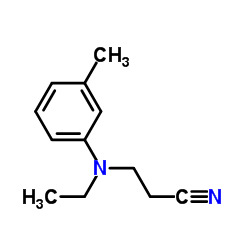
QUICK DETAILS:
Product name:N-Ethyl-N-cyanoethyl-m-toluidine
CAS:148-69-6
Molecular formula:C12H16N2
Molecular weight:188.27
EINECS No.:205-721-6
Purity:≥99%
Brand:MIT -IVY INDUSTRY CO.,LTD
Other names:3-(N-Ethyl-m-toluidino)propiononitrile;3-(ETHYL-M-TOLYL-AMINO)-PROPIONITRILE;N-cyanoethyl-N-ethyl-m-Toluidine;N-(2-Cyanoethyl)-N-ethyl-m-toluidine;3-(N-Ethyl-m-toluidino)propiononitrile; 3-propanenitrile
Appearance:brown liquid
Port: any port in china
Packing:according to the clients requirement
Storage: Store in dry, dark and ventilated place.
Transportation: by sea or by air
payment methods: L/C, T/T, D/A, D/P, O/A, paypal, western union etc.accept all payment.
Application:
1. Used as a dye intermediate
2. Used as an intermediate for disperse red 65, 88, 153, 179 and other dyes.
CERTIFICATE OF ANALYSIS
Item
Specifications
Results
Identification (By GC)
Conform to the standard
Conform
Appearance
Primrose yellow liquid
Qualitied
N,N-dimethyl-p-toluidine
≥99.00%
99.22%
p-toluidine assay
≤0.05%
0.03%
N-methyl-p-toluidine assay
0.70%
0.53%
Another assay
0.30%
0.22%
Conclusion
The results conforms with enterprise standards
Superiority:
1.High quality with competitive price:
We are manufacturer and can provide high quality products with factory price.
2.Fast and safe delivery
① Parcels can be sent out within 48 hours after payment. Tracking number is available.
②Secure and discreet shipment. You have various choices of transportation methods.
3.We have clients throughout the world.
① Professional service and rich experience make customers feel at ease, adequate stock and fast delivery meet your desire.
②Market feedback and goods feedback are appreciated, meeting customers's requirement is our responsibility.
③High quality, competitive price, fast delivery, first-class service gain the trust and praise from the customers.
Company Information
MIT-IVY INDUSTRY CO.,LTD is a manufacturer and exporter of fine chemical dyes & pharmaceutical intermediates in China.
Mainly produce aniline series products and chlorine series products.
We are a young company full of vitality and vitality. The company has a group of energetic, well-trained employees and strong technical research and development capabilities. We specialize in the production, development and sales of API intermediates, fine chemicals and plant extracts. Relying on advanced equipment and strict management, adhere to the business philosophy of "openness, tolerance, innovation, and sharing" to create a win-win cooperationplatform.Everything comes from innovation, it is our philosophy !
If you are interested in getting more quotations,
please add WHATSAPP:0086-13805212761 or E-MAIL:[email protected]
MIT-IVYINDUSTRYCO.,LTDMit-Ivy is a well-known fine chemicals and pharmaceutical intermediates
manufacturer with strong R&D support in China.
Mainly involved Aniline, Chlorine products.
Payment:DA 60 DAYS
TEL:008619961957599 E-MAIL:[email protected]
产品
Product
CAS
N,N-二甲基-1,4-苯二胺
N,N-Dimethyl-1,4-phenylenediamine DMPD
99-98-9
N,N-二甲基苄胺
N,N-Dimethylbenzylamine BDMA
103-83-3
N,N-二甲基甲酰胺
N,N-Dimethylformamide DMF
.68-12-2
N,N-二甲基甲酰胺二甲缩醛
DMF-DMA
N,N-Dimethylformamidedimethyl acetal (DMF-DMA)
4637-24-5
N,N-二甲基乙酰胺
N,N-Dimethylacetamide DMAC
127-19-5
N,N-二乙基间甲苯甲酰胺
避蚊胺
N,N-diethyl-m-toluamide DEET
134-62-3
N,N-二乙基羟胺
N,N-Diethylhydroxylamine DEHA
3710-84-7
N-甲基-N-羟乙基苯胺
2-(N-甲基苯胺)乙醇
2-(N-methylanilino)ethanol
93-90-3
N-甲基吡咯烷酮
N-methylpyrrolidone
872-50-4
N,N-二甲基苯胺
N,N-Dimethylaniline DMA
121-69-7
N,N-二甲基对甲苯胺
N,N-Dimethyl-p-toluidine DMPT
99-97-8
N,N-二甲基邻甲苯胺
N,N-Dimethyl-o-toluidine DMOT
609-72-3
N,N-二乙基苯胺
N,N-Diethylaniline
91-66-7
N,N-二乙基间甲苯胺
N,N-Diethyl-m-toluidine
91-67-8
N,N-二羟乙基苯胺
N,N-Dihydroxyethylaniline PDEA
120-07-0
N-乙基间甲苯胺
N-乙基-3-甲基苯胺
N-Ethyl-m-toluidine/N-Ethyl-3-methylaniline
102-27-2
N-乙基-N-氰乙基苯胺
3-(N-ethylanilino)propiononitrile
148-87-8
N-乙基-N-羟乙基苯胺
N-Ethyl-N-hydroxyethylaniline
92-50-2
N-乙基-N-苄基苯胺
乙基苄基苯胺;
N-苄基-N-乙基苯胺
N-ethyl-N-phenylbenzenemethanamine
92-59-1
N-乙基-N-氰乙基间甲苯胺
N-2-cyanoethyl-N-ethyl-m-toluidine
148-69-6
N-乙基-N-苄基间甲苯胺
N-Benzyl-N-ethyl-m-toluidine
119-94-8
N-乙基邻甲苯胺
N-Ethyl-o-toluidine
94-68-8
N-乙基苯胺
N-Ethylaniline
103-69-5
N-甲基苯胺
N-Methylaniline
100-61-8
N,N-二甲基-间甲基苯胺
N,N-DIMETHYL-M-TOLUIDINE
121-72-2
N-甲基二苯胺
N-Methyldiphenylamine
552-82-9
N-甲基-邻甲基苯胺
N-METHYL-O-TOLUIDINE
611-21-2
N-甲基-对甲基苯胺
N-METHYL-P-TOLUIDINE
623-08-5
4-甲基-N-苯基苯胺
N-PHENYL-P-TOLUIDINE
620-84-8
N-异丙基苯胺
N-ISOPROPYLANILINE
768-52-5
N,N-二氰乙基苯胺
N,N-Dicyanoethylaniline
1555-66-4
N,N-二羟乙基-对甲基苯胺
N,N-DIHYDROXYETHYL-P-TOLUIDINEDHEPT
.3077-12-1
N-乙基-2-硝基苯胺
N-Ethyl-2-Nitro-Benzenamine
10112-15-9
2,4-二氯苯胺
2,4Dichloroaniline
554-00-7
N-(2-羟乙基)乙二胺
AEEA
111-41-1
1,3-二甲基-2-咪唑啉酮N,N-二甲基亚乙基脲1,3-二甲基-2-咪唑啉酮(DMI)
1,3-Dimethyl-2-imidazolidinone DMI
N,N'-dimethylimidazolidinone
80-73-9
N,N-二苄基羟胺
N,N-Dibenzylhydroxylamine
621-07-8
对甲苯胺
P-Toluidine PT
106-49-0
邻甲苯胺
O-Toluidine OT
95-53-4
二乙基乙醇胺
DEEA;DEAE
100-37-8
甲萘胺
AlphaNaphthylamine
134-32-7
间二氯苯
1,3-Dichlorobenzene MDCB
541-73-1
间甲苯胺
M-Toluidine MT
108-44-1
间苯二胺
M-PHENYLENEDIAMINE MPDA
108-45-2
多乙烯多胺
PEPA
68131-73-7
二乙烯三胺(DETA)
Diethylenetriamine DETA
111-40-0
三乙烯二胺
Triethylenediamine
280-57-9
三乙烯四胺
TriethylenetetramineTETA
112-24-3
四乙烯五胺
TEPA
112-57-2
Read the full article
#148-69-6#2#2-trifluoro-N-(2-methoxyphenyl)acetamide#3-[ethyl(3-methylphenyl)amino]-148-69-6#99%#API#APIs#Benzene#C12H16N2#CAS:148-69-6#CAS:NO.148-69-6#chemicalrawmaterials#dyeintermediate#Dyeintermediates#EINECSNo.:205-721-6#Finechemicals#Highquality#HighqualityN-Ethyl-N-Cyanoethyl-M-Toluidine#HighqualityN-Ethyl-N-Cyanoethyl-M-Toluidinesupplier#N-2-cyanoethyl-N-ethyl-m-toluidine#n-ethyl-n-cyanoethyl-m-toluidine#N-Ethyl-N-cyanoethyl-m-toluidineHighqualitylowpriceinstock#N-Ethyl-N-cyanoethyl-m-toluidineManufacturerinChina#N-Ethyl-N-Cyanoethyl-M-Toluidinesupplier#N-Ethyl-N-cyanoethyl-m-toluidineSupplierinChina#N-Ethyl-N-Cyanoethyl-M-Toluidine,DyeIntermediate,N-(2-Cyanoethyl)-N-ethyl-m-toluidine,#organicintermediates#pharmaceuticalintermediates#Propanenitrile
1 note
·
View note
Text
A Beginner’s Guide to Histology

Histology is the study of tissues. As an essential field of medical science, histology is used to diagnose and treat diseases, understand the anatomy and physiology of different organs, and develop new therapies. This branch of science is crucial in medical diagnosis, scientific research, forensic investigation, and archaeological studies.
Medical professionals, including pathologists, diagnose diseases like cancer and infections using histology. By studying tissues at a cellular level, histologists help bridge the gap between anatomy and physiology, providing valuable insights into tissue behavior and reactions to treatments.
The human body has four main types of tissues: epithelial, connective, muscle, and nervous tissue. Epithelial tissue covers the body surfaces, lines the organs and cavities, and serves as a barrier to protect against physical, chemical, and biological threats. Connective tissue supports and anchors the organs, stores and transports nutrients and waste, and participates in immune responses.
Muscle tissue contracts and relaxes to generate movement and force. It is classified into three types: skeletal, cardiac, and smooth muscle. Nervous tissue transmits and processes information through specialized cells called neurons and glia, forming the complex nervous system network.
Histological analysis involves essential steps to prepare tissues for microscopic examination. The process includes fixing the tissue to prevent decay, processing and embedding the tissue in supporting material, sectioning it into thin slices, and finally, staining the sections to highlight specific structures. Various stains are available, each chosen to enhance the visibility of certain components within the tissues.
The most common and widely used stain is the Hematoxylin and Eosin (H&E) stain, which colors cell nuclei blue and cytoplasm pink. Toluidine blue, Wright's stain, and trichrome stains are other techniques that produce different colors to reveal specific structures or proteins within the tissues.
Pathologists carefully examine tissue samples obtained through biopsies or autopsies, identifying abnormal cells and providing valuable information for treatment planning. This helps doctors make accurate diagnoses and develop appropriate treatment strategies.
In the field of research, scientists utilize histology to investigate tissues at a cellular level, contributing to advancements in medicine, biology, and genetics. The detailed examination of tissues aids in understanding various diseases and unlocking potential therapeutic targets.
Histology also leaves its mark on forensic science. In unexplained deaths, microscopic analysis of tissues from autopsies provides critical clues, helping forensic experts unravel the circumstances surrounding such incidents.
Beyond the present, histology also aids in exploring our past. In archaeology, the study of ancient tissues, like bones and teeth, sheds light on the lives of past civilizations and species. These insights provide valuable knowledge about our evolutionary history.
Not limited to human health, histology also plays a vital role in veterinary science. Veterinarians rely on histology to diagnose animal diseases accurately, allowing for timely and appropriate treatments. Additionally, histology helps assess the effects of treatments and monitor animal health.
Finally, in the fascinating world of plants, plant histology, also known as plant anatomy, reveals the microanatomy of plant tissues. By studying these tissues, researchers gain insights into plant growth and development, which can affect agriculture and environmental conservation.
0 notes
Text
LIST OF DIAGNOSTIC TESTS IN DIFFERENT MEDICAL CONDITIONS
▪️Adom Test- Scoliosis
▪️Aldehyde test- Leprosy
▪️Allen test- ABG Analysis
▪️Arthrocentesis: Joint inflammation and infection
▪️Auspitz’s sign: Psoriasis
▪️Bangle Test- Protein-Energy Malnutrition
▪️Becker’s sign: Thyrotoxicosis
▪️Benedict Test- Glucose in urine
▪️Binet Test- intelligence quotient
▪️Blumberg’s sign: Peritonitis
▪️Bonny Test / Marshall Test- Stress Incontinence
▪️Braden scale: to measure the integrity of bedsore
▪️Burrow ink test: Scabies / The itch
▪️Confrontation Test- Central and Peripheral Vision
▪️Creatinine clearance test – Estimation of GFR
▪️D-Dimer Test – measuring Clot formation(DVT, PE, DIC)
▪️Dexa scan – Bone metabolic disease Eg. Osteoporosis
▪️Dexamethasone suppression test: ACTH or Pituitary / adrenal gland tumor
▪️Dick Test- Scarlet Fever
▪️Direct Coomb test- Haemolytic Anaemia
▪️Fern Test or Nitrazine Test- leakage of Amniotic fluid
▪️Frei Test- Lymphogranuloma inguinale
▪️Glucose tolerance test – Diabetes Mellitus
▪️Glycosylated Haemoglobin/Hb1AC Test- Diabetes Mellitus
▪️Gold QuntiFeron Test- Tuberculosis
▪️Guthrie Test – Phenylketonuria
▪️Hanging Drop Test – Cholera
▪️Heel to shin test – CSF leakage
▪️Hey Test- Bile Salt in Urine
▪️Histamine Test- Leprosy
▪️Holter Monitoring – 24 hour ECG monitoring in Dysrhythmia
▪️Ishihara Test- Color Vision test
▪️Jegar’s type Card test- Near Vision
▪️Knee Kiss Test- Meningitis in Children
▪️KveimTest- Sarcoidosis
▪️Ortho-Toluidine Test- Check Chlorine in Water.
▪️Pap smear: Cancer of the cervix
▪️Patch Test- Allergic Reaction
▪️Paul Bunnell Test- Epstein Barr Virus
▪️Phalen’s / Tinel’s Test- Carpal Tunnel Syndrome
▪️Phosphate test- Pasteurization
▪️Rinne and Weber test – Hearing
▪️Roller Over Test- Pre-Eclampsia
▪️Romberg Test- Neurological Function/balance or gait
▪️Rothera test- Acetone in Urine
▪️Rubin test- Patency of fallopian tube
▪️Schick test- Diphtheria
▪️Schilling Test – Vitamin B12 Absorption
▪️Shake Test / Bubble Test- Surfactant and fetal Lungs maturity
▪️Smith test- Bile Pigment in Urine
▪️Snellen Chart Test- Distance Vision
▪️Sweat chloride test- Cystic fibrosis
▪️Tape Test- Pin Worm
▪️Tensilon Test- Myasthenia Gravis
▪️Tourniquet Test- Dengue
▪️Treadmill/Stress Test-heart function
▪️Trendelenburg test- varicose vein
▪️Triple Test- Down Syndrome
▪️Tzank Test- Herpes Genital or Varicella
▪️Urea breath test- H. Pylori
▪️VDRL test- Syphilis
▪️VMA (Vanillylmandelic acid test) – Pheochromocytoma
▪️water deprivation Test- Diabetes Insipidus
▪️Weil Felix test- Rickettsial infections
▪️Widal test-Typhoid (on 2nd week)
▪️Wood’s Light examination: Superficial infection of the skin
🔹CANCER DIAGNOSTIC TESTS:
▪️CA 15-3: breast cancer
▪️CA 19-9: GIT (Pancreatic, liver cancer)
▪️CA 125: Ovarian cancer
🔹AIDS DIAGNOSTIC TESTS:
▪️ELISA Test – Screening for HIV
▪️Western Blot test – Confirmation Test for HIV
▪️CD4 count – Predictor of HIV (< 200) P24
▪️Antigen Assay test: Indicates Active HIV ▪️Replication or seen in pregnancy

1 note
·
View note
Text
Best Gynecologist Doctor in Vanasthalipuram – Evyahospitals
Obstetrics and Gynaecology
We offer a wide range of treatments in the Department of Obstetrics & Gynecology at Evya Hospital the Best Gynecology Hospital in Vanasthalipuram, from yearly preventative women’s checkups to sophisticated medical and surgical care of women during their reproductive and post reproductive years, including urogynecology care. We deliver first-rate medical care while acknowledging the psychological and interpersonal elements of gynecologic issues and offering the assistance required in these areas. Gynecologists, obstetricians, radiation oncologists, medical oncologists, surgical oncologists, and specially trained gynecologic nurses and social workers make up the highly skilled, multidisciplinary treatment team that works with patients. The treating team includes the patient, the patient’s family, and the referring doctor.
We provide young women with proper, preventative gynecologic care who are worried about menstrual irregularities, contraceptive technologies, and stress. We offer counselling and therapeutic treatment for middle-aged women going through the peri- and post-menopause as they finish their families. When medicinal treatment is ineffective, we provide cutting-edge treatments, such as same-day laparoscopic surgery and trans cervical procedures to remove fibroids and control bleeding.
From common pelvic pain and period-related issues to more serious conditions like endometriosis, fibroids, ovarian cysts or ovarian cancers, or uterus-related issues.
Our team of Best Gynecologist Doctor in Vanasthalipuram at EVYA Hospitals accurately diagnoses and treats a wide range of medical conditions that exclusively affect women. These conditions range from fungal or viral infections, common pelvic pain, and period-related issues.
We also do both modern and traditional hysterectomy operations as well as treat menopause, early pregnancy symptoms, and infertility disorders.
Obstetrics and Gynaecology Treatments & Procedures by Best Gynecologist Doctor in Vanasthalipuram
We provide diagnostic methods to assess female incontinence and medicinal and surgical treatments to enhance pelvic floor and urine function. The department performs abdominal and vaginal operations such vaginal suspension and urinary sling procedures. We provide a range of abdominal, laparoscopic, and transcervical operations, such as the removal of fibroids and ovarian cysts, and we also treat endometriosis and irregular, heavy vaginal bleeding in women.
Best Gynecologist Doctor in Vanasthalipuram provides a wide range of healthcare services that fulfil the needs of women through all the stages of life, starting from pre-conception planning and pregnancy to menopause and beyond.
Our cutting-edge surgical treatments include laparoscopic assisted vaginal hysterectomy, laparoscopic sling and vaginal suspension procedures, advanced laparoscopic surgical procedures for adhesions, ovarian cysts, and endometriosis, and trans-cervical procedures to control uterine bleeding and remove uterine fibroids projecting into the uterine cavity as well as prolapse of the uterus.
Our doctors frequently perform the following procedures and surgeries: adhesiolysis, cervical biopsies, colposcopies, dilation and curettage (D&C), endometrial ablation, uterine or endometrial biopsies, fluid-contrast ultrasound (FCUS), hysterectomy, hysterosalpingography, hysteroscopy, myomectomy, oophorectomy, pelvic ultrasound, pelviscopy, uterine suspensions, uterine (artery) fibroid embolization (UFE) and vulvectomy, vaginal vault, trachelectomy, toluidine blue dye test.
0 notes
Text
https://www.linkedin.com/pulse/m-toluidine-market-has-huge-growth-industry-size-
0 notes
Photo
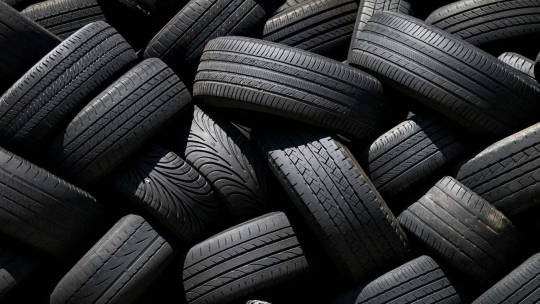
Authorities admits its ortho-toluidine publicity restrict is just too excessive : Photographs
0 notes